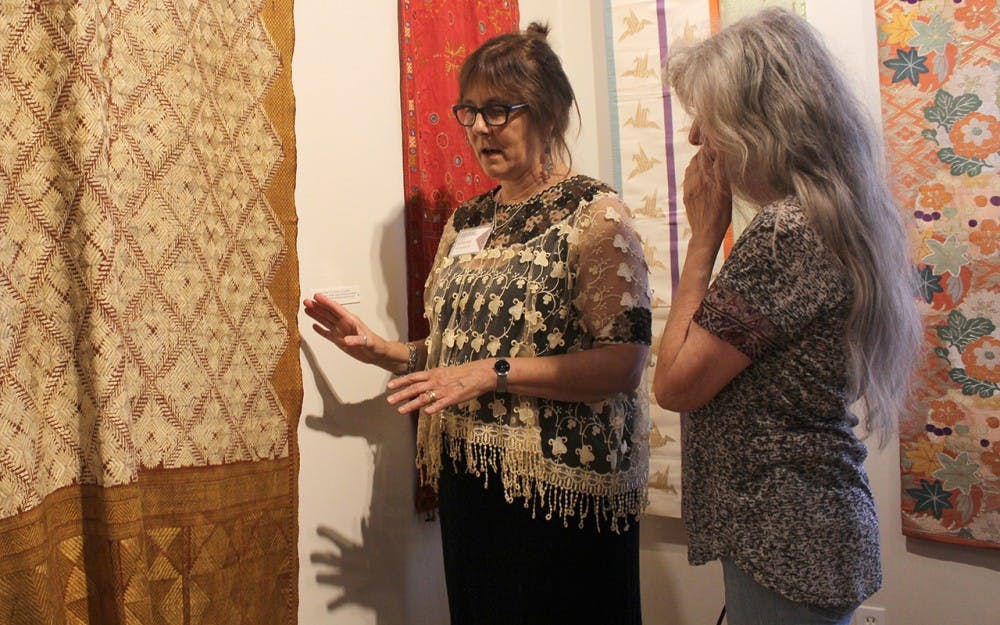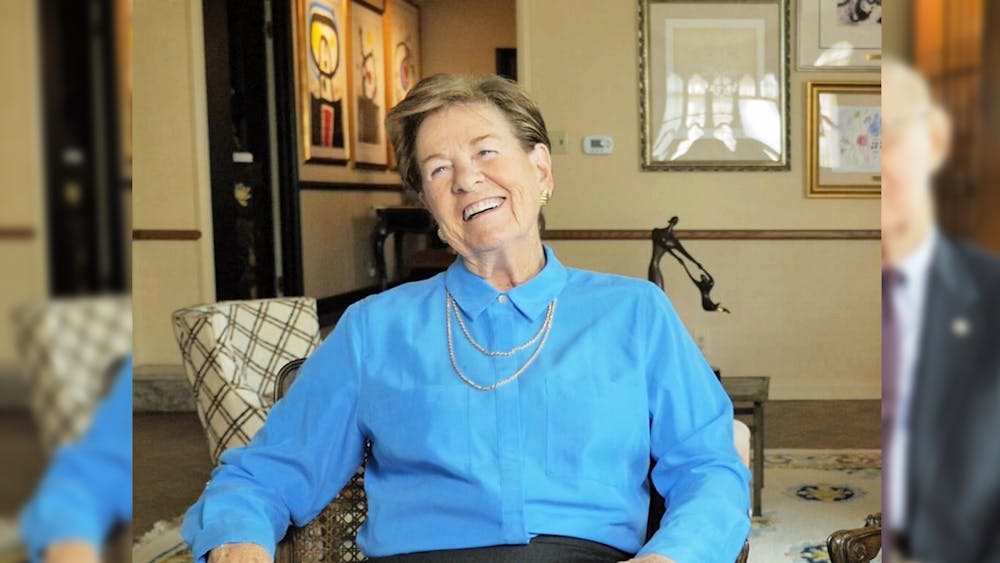September’s Gallery Walk brought together artists and collectors from across mediums and inspirations. Spaces such as Gather :handmade shoppe & Co.:, the Ivy Tech John Waldron Arts Center and Pictura presented distinctive exhibits as part of the ten-gallery group participating this month.
Gather displayed the two- and three-dimensional work of Rebecca Prato. Prato created work that incorporated text, be that handwritten musings on thoughts of the day or torn up pieces of a 20th-century book, in her series “Lost in Translation.”
“I wanted to make something different. My background is in photography — I’ve always liked the idea of mixed media and collaging, stuff that’s 3D, which is hard to do in photography,” Prato said. “I started out with that and decided that I wanted to play around with the idea of words.”
Prato said she went through a phase of not wanting to title her photography and worked instead with the absence of text to allow for open interpretation. Later, she took on the opposite extreme and titled pieces she had not even created and put great importance in the labels.
“In this, I wanted to explore what happened when the words themselves were the actual artwork,” Prato said. “I started out with everyday thoughts that you might have throughout your day — in a class, at work, out on the street. Then I kind of wanted to explore the idea of something more important.”
For the second part of the series, Prato used a book called “Female Complaints,” which was written during a time when the phrase was used to encompass issues related to women and menstruation.
The term can be applied differently in modern society, Prato said. She wanted to explore some of those modern complaints, which inspired the abstract collage pieces crafted from the pages of the book.
“You might say something or write something with such good intentions or meaning one thing and somebody else could get something completely different that you didn’t mean,” Prato said. “The abstract pieces kind of deal with what happens when your words are deconstructed or misconstrued.”
The John Waldron Arts Center included among its exhibits the 23rd Lotus World Music & Arts Festival Exhibit “Adornment Objects,” a display of wearable materials from a variety of collectors.
George Malacinski, a biology professor at IU, was one of the collectors whose items were on display. He said his contribution to the folk art-oriented collection included items from Iran, Afghanistan, Pakistan and Morocco, and the goal of the group was to have as diverse a collection of items as possible.
One large piece Malacinski contributed came into his possession during a bicycle trip in Marrakech, Morocco.
“I went into the bazaar on my bicycle and I saw this hanging in a shop, so I pedaled my bicycle into the shop and, without speaking any English, inquired about this, bought it, wrapped it up, put it on my bicycle and pedaled outside of the bazaar to my hotel,” Malacinski said. “I think many of us have picked up pieces that way.”
Pictura Gallery had among its photographic exhibitions the work of Peggy Woodcock in its Brick Gallery.
“People of Nepal: Before the Quake” was a collection of photographs taken by Woodcock on a 2014 trip to Nepal just before the magnitude 7.8 earthquake hit and caused substantial damage, especially in the villages with largely stone buildings.
“I took pictures all over Nepal. I took architecture and other things as well,” Woodcock said. “After the earthquake, the people spoke to me. I just needed to make a tribute to them somehow.”
Woodcock said she regularly takes photos of her surroundings during trips around the world, of both people and the environment.
“I’m always interested in the people, I’ve not done a lot of close-up portraits for this, but I take a lot of pictures of people, not just the architecture and things like that,” Woodcock said. “I do have a portfolio of architecture and things, so I guess this is just part of what I do — it’s extensive.”






